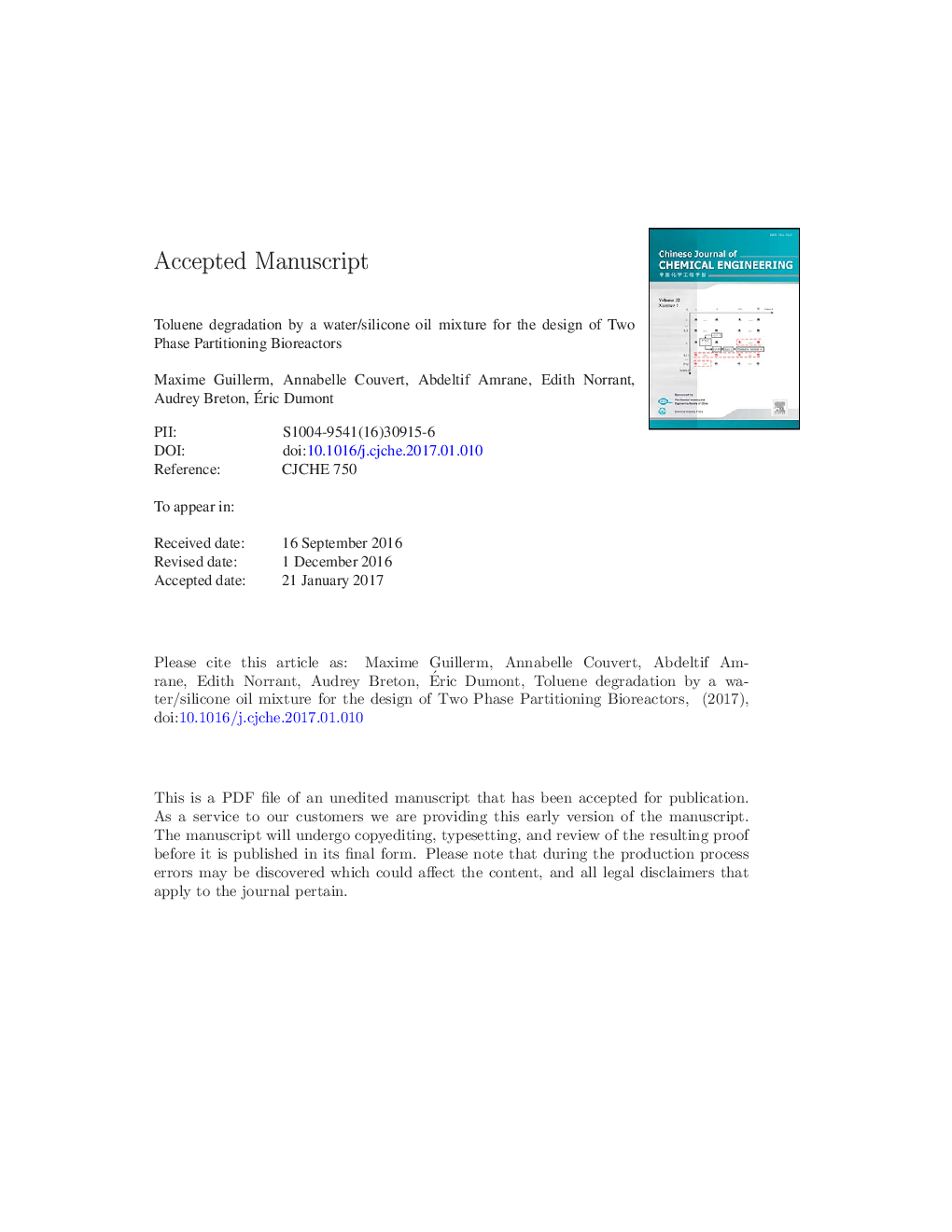| Article ID | Journal | Published Year | Pages | File Type |
|---|---|---|---|---|
| 6593322 | Chinese Journal of Chemical Engineering | 2017 | 14 Pages |
Abstract
Toluene degradation performances were studied in a 10 L Two-Phase Partitioning Bioreactor (TPPB). The liquid phase consisted of a mixture of water and PDMS 50 (PolyDiMethylSiloxane, i.e. silicone oil, viscosity of 46 mPa·s) in the volume ratio of 75%/25%. Two series of experiments were carried out: in the first, the reactor was sequentially supplied with toluene whereas in the second, toluene was continuously supplied. Activated sludge from the wastewater treatment plant of Beaurade (Rennes, France) was used at an initial concentration of 0.5 gdry weight Lâ 1mixture. The elimination capacity (EC) was investigated as well as the change in biomass concentration over time. Toluene biodegradation was very efficient (removal efficiency, RE = 100%) for toluene flows ranging from 0.2 to 1.2 ml·hâ 1, corresponding to elimination capacities of up to 104 g·mâ 3·hâ 1. For a toluene flow of 1.2 ml·hâ 1, the biomass concentration measured at the end of the experiment was 4.7 gdry weight Lâ 1mixture. The oxygen concentration in the liquid phase was clearly not a limiting factor in these operating conditions. Based on these results, an extrapolation leading to the design of a large-scale pilot TPPB can now be considered to study toluene degradation performances in industrial conditions.
Related Topics
Physical Sciences and Engineering
Chemical Engineering
Chemical Engineering (General)
Authors
Maxime Guillerm, Annabelle Couvert, Abdeltif Amrane, Edith Norrant, Audrey Breton, Ãric Dumont,
